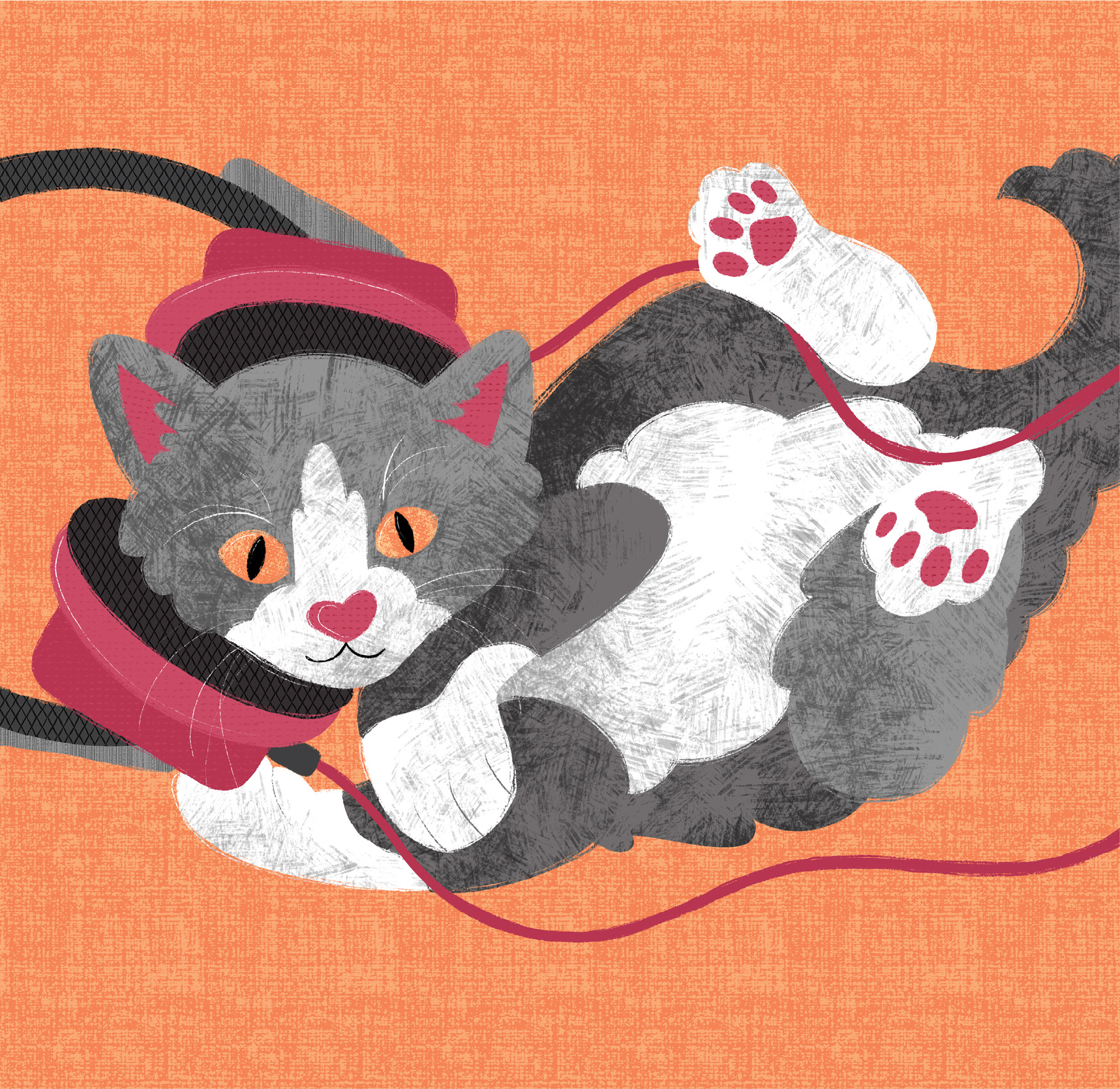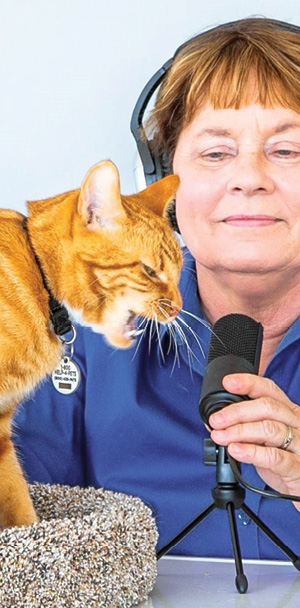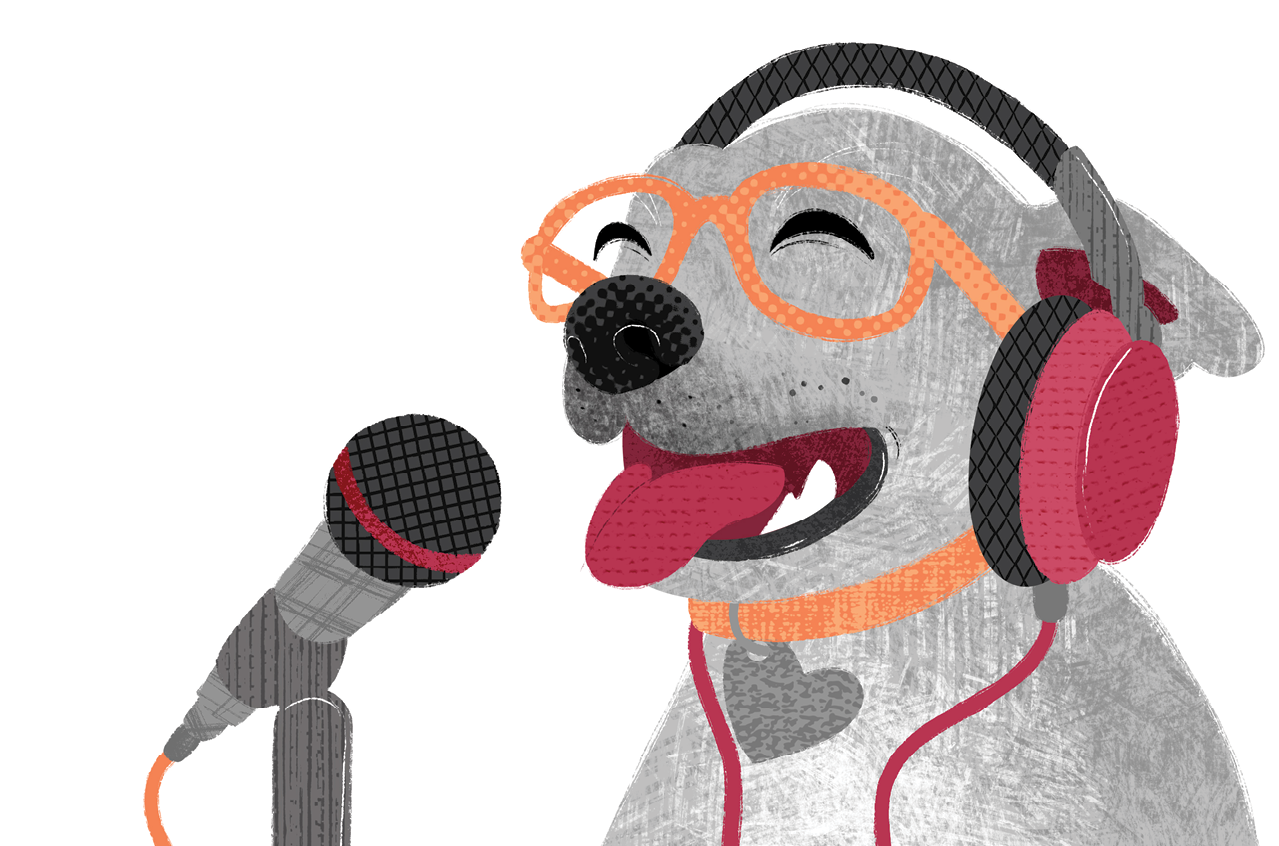To Pod or Not to Pod?
What to Consider Before Taking the Plunge
By Jen Reeder

Integrative veterinarian Mitsie Vargas, DVM, feels she has a time-consuming but rewarding hobby: podcasting.
For nearly four years, Vargas, founder of AAHA-accredited Orchid Springs Animal Hospital in Winter Haven, Florida, author of Alt-Vet: The Revolutionary Pet Care and Longevity Solution, and host of The Pet Healer Podcast has released a podcast every single Friday.
 Mitsie Vargas, DVM, has released a new episode of The Pet Healer Podcast every Friday since 2020.
Mitsie Vargas, DVM, has released a new episode of The Pet Healer Podcast every Friday since 2020.
“I feel like it helps,” she said. “People have sent letters and they tell me that it’s helped them, or they heard this on the podcast and they have an extra question. So it tells me that it’s making an impact, and I like that. But it is a hobby at the end of the day for me.”
Vargas launched The Pet Healer Podcast in 2020 because she’d begun receiving an increasing number of questions through social media and in practice about pets—partly because so many people acquired pets at the onset of the pandemic and because of heightened health concerns. Many asked the same questions.
“I think (the podcast) was a vehicle for me to discuss fears about COVID in pets and current topics about integrative medicine, Chinese medicine, acupuncture, different herbs and supplements,” she said. “I can direct the people to listen to the podcast or say, ‘We’re going to talk about that in the podcast.’ So that’s how it was born.”
A client helps her with the video and editing at a minimal price in exchange for discounted veterinary care. The Pet Healer Podcast’s only sponsor is her practice because she doesn’t want to be beholden to advertisers—she prefers to speak freely about her opinions of products.
She purchased a special microphone but elected not to hire a studio, instead recording at home or in the practice depending on her schedule. She releases the podcast for free on a variety of platforms, including Spotify and iTunes, where it’s free to upload as well.
“I get emails from all over the world,” she said. “It’s just fun to know that from Winter Haven, Florida, I could be talking to so many people in the world.”
Interviewing Podcast Guests
Just like with radio shows, podcasts should avoid periods of silence, or “dead air,” and hosts should keep the tempo moving along. Arden Moore, host of the podcasts Oh Behave! and Four Legged Life, said it’s important to do your homework on the guest prior to the interview.
“The worst thing you could ever do as a podcast host is say, ‘We have Dr. Jen on. Hey, tell everybody about yourself,’” she said. “That is lazy interviewing.”
It won’t make the person feel like a valued guest and also could lead to the guest launching into a long chronological list of their life’s accomplishments, or a nervous, “Umm, ahh,” So she recommends introducing a guest by summarizing their credentials—no long list of acronyms to make listeners tune out—and sharing the topic they’ll be diving into.
“You need to ask direct questions and you need to keep the pace,” she said. “You’ve got to honor that guest, but you also have to honor the people tuning in.”
Crowded Market
Podcasting is definitely having a moment, with more and more people starting podcasts seemingly every day, including veterinary professionals. There’s plenty of demand: people listen while they’re exercising, driving to work, or even walking their dogs. Plus, smart phones have made it easier than ever to record a show. So the question is no longer, “Can you start a podcast?” but “Should you?”
Deciding whether you have time to commit to podcasting is just one important consideration, according to Andy Roark, DVM, MS, host of the podcast The Cone of Shame, co-host of The Uncharted Veterinary Podcast (with practice management expert Stephanie Goss), veterinarian at AAHA-accredited Travelers Rest Animal Hospital in Travelers Rest, South Carolina, and CEO at Uncharted Veterinary Conference.
Roark launched The Uncharted Veterinary Podcast, which covers business and leadership, in 2016 because he was unhappy with the direction social media was taking, and because he was getting a lot of repeat questions. He also wanted to share the Uncharted philosophy of doing business with culture as a cornerstone rather than profit.
“I am an idea guy,” he said. “I love sharing ideas.”
He’s well aware of all the “noise” in the world from so many podcasts, TikTok influencers, and YouTube channels. So before staring a podcast, he suggests asking, “Why would anybody listen?”
A general practitioner hoping to start a podcast to attract new clients to their practice from area listeners can likely find more efficient marketing methods, he noted. Similarly, if the goal is to educate local clients, consider handouts or YouTube videos as an alternative.
 Andy Roark, DVM, MS, has his hands in two different podcasts. He suggests recording 10-episode "seasons" at a time to test the waters.
Andy Roark, DVM, MS, has his hands in two different podcasts. He suggests recording 10-episode "seasons" at a time to test the waters.
If you decide to move forward with a podcast, he suggests considering, “How are you going to define success? Is it listenership or is it the joy of making something? If it’s the joy of making something, do it.
“One of the lessons I learned early on in my career is it can be really good and really freeing to announce that you are going to do a season, and then make 10 (podcast episodes) and see how it goes,” he said. “That way if you do 10 and you’re like, ‘Man, this is a lot of work and I don’t know that I want to keep doing this,’ you can say, ‘Great—that’s the end of our season. Thanks everybody for being here.’ Then you just end it, and you go on guilt free.”
If getting a huge listenership is your podcast goal, really home in on why people would listen to your podcast as opposed to the “sea of podcasts” already out there. Keep in mind that if you’re interested in gaining sponsors, you’ll need to have thousands of listeners, according to Roark.
When you’ve built a large audience, if you decide to monetize your podcast, you’ll need to decide if you want to use a platform that lets advertisers bid and put ads directly onto your podcast, or approach sponsors yourself. (Roark opts for the latter because he’s “very picky” about advertisers.)
For Roark, one of the things he loves most about hosting podcasts is the chance to interview people he admires.
“I knew this going in, but it’s just been shown to me again and again: we have the most generous and giving profession in the world.”
Andy Roark, DVM, MS
“I knew this going in, but it’s just been shown to me again and again: we have the most generous and giving profession in the world,” he said. “The number of people who are willing to make themselves available to answer your questions, to share their knowledge and their passion, it’s just absolutely staggering. I have been inspired again and again. I have had my curiosity stoked again and again. I have had my beliefs challenged in the most positive way. It has just been absolutely wonderful and a really fun, great experience.”
Considerations for Getting Started—Or Not
Pet writer Arden Moore, author of over 25 dog and cat books, including The Cat Behavior Answer Book and The Dog Behavior Answer Book, and founder of Pet First Aid 4U, hosts two successful podcasts: Four Legged Life and Oh Behave! With Arden Moore.
The executive producer of Pet Life Radio approached her about hosting Oh Behave! back in 2007, the year podcasts were invented.
Over 500 episodes later, she knows a thing or two about podcasting.
 Arden Moore says she is the host of the longest-running pet podcast on the planet. She suggests starting out as a guest on someone else's podcast before diving into your own.
Arden Moore says she is the host of the longest-running pet podcast on the planet. She suggests starting out as a guest on someone else's podcast before diving into your own.
“I’m actually the host of the longest-running weekly pet podcast on the planet,” she said.
“The role of a good podcast host is to bring out accurate information with good guests that are validated.”
Arden Moore
She applies her journalism skills to podcasting, such as fact checking—something drilled into her mind early in her reporting career when an editor quipped, “If your mother tells you she loves you, check it out.”
“The point is—and this is something for the veterinarians who may not be trained in media or journalism—be careful who you source and what you source, because there’s too much information out there now,” she advised. “The role of a good podcast host is to bring out accurate information with good guests that are validated.”
Since veterinarians are typically strapped for time, she suggests hiring a podcast producer (from a company like RadioShowPro) who can edit videos of the podcast into 8–10 minute “shorts,” and pull the best minute for TikTok.
“It then brings everybody back to your podcast,” she said. “Everybody needs different entry points.”
You won’t need to invest in much tech beyond a quality microphone and a light, but you’ll need to be sure to preserve audio quality by recording away from noisy fans, air conditioners, and traffic.
Similarly, Moore recommends having a nondistracting background —no books facing out so that viewers start reading titles instead of listening, or silly backdrops (say, the Golden Gate Bridge if you don’t live in San Francisco).
One way to gain practice and insights into what goes into making a podcast is to appear as a guest on someone else’s. In fact, with burnout so prevalent in the veterinary industry, Moore suggests listening to other podcasts and potentially becoming a recurring guest in lieu of starting your own.
“Put your paw in the water,” she said. “Maybe you can be a once-a-month guest host with somebody on a show. Then you don’t have this big-time commitment.”
Time can be a major downside to hosting a podcast. That was the case for Julie Buzby, DVM, CAVCA, CVA, founder and CEO of Dr. Buzby’s ToeGrips for Dogs, which launched in January 2013.
She hosted The Buzby Dog Podcast about senior dog care from July 2017 to October 2018. After 70 weekly shows, she decided to retire it.
“I am a Type A perfectionist, and I think most veterinarians are,” she said. “So even though I was talking about topics that are very familiar, I did a ton of research and triple-checked my facts. So it took a lot of time. It wasn’t just, ‘Let’s sit down and record.’”
She’d hired a “great” podcast producer and really enjoyed working with him for over a year, but when her accountant noted she was spending $7,000 on the podcast, she suddenly knew it was time to switch gears and start blogging instead.

Buzby stressed that she never wants to discourage others; she hopes her legacy is as an “encourager.” In fact, she might even return to podcasting—but with a different topic.
“Because I’ve been a veterinarian for 25 years and because I have eight kids, my heart really goes out to veterinary moms,” she said. “So if I restart a podcast, it’s going to be more of an interview style—talking to colleagues and sharing their stories.”
When considering whether to start a podcast, it’s imperative to consider the long game, according to Justine Lee, DVM, DACVECC, DABT, author of It’s a Dog’s Life…but It’s Your Carpet and It’s a Cat’s World. . . You Just Live in It, host of the podcast ER Vet and founder and director of medicine at VETgirl, a subscription-based online CE platform that includes the VETgirl podcast, which she co-hosts with Garret Pachtinger, VMD, DACVECC.
Listen InThe Pet Healer Podcast: osahvets.com/podcast Manager-to-Manager: vhma.org/education/podcast The Cone of Shame: drandyroark.com/podcast The Uncharted Veterinary Podcast: unchartedvet.com/uncharted-veterinary-podcast Oh Behave!: ardenmoore.com/the-oh-behave-show Four Legged Life: ardenmoore.com/fourleggedlifeshow VETgirl: vetgirlontherun.com ER Vet with Dr. Justine Lee: petliferadio.com/ervet.html Central Line: The AAHA Podcast: aaha.org/podcast |
“People oftentimes don’t realize the amount of work,” she said. “For one podcast that’s 20 minutes long, it takes four to five hours of work. Because for us, what we do is review a clinically relevant journal article that’s peer reviewed, write it up, interpret it, analyze it, record it, edit it, and then have to upload it.”
Lee also cautioned that in general, podcasts aren’t profitable, so you should do it for the passion of the topic. She agreed it’s vital to share accurate information and said veterinary podcasters should consider forming an LLC and investing in professional liability insurance.
On the plus side, podcasts can create a platform to educate a wide audience; VETgirl has been downloaded over six million times in over 150 countries. So when done right, Lee said veterinary podcasts can help strengthen the industry as a whole.
“It’s truly elevating the quality of care worldwide through amazing technology that can be accessed anywhere in the world,” she said.
 |
Jen Reeder is an award-winning journalist and former president of the Dog Writers Association of America. |
Photo credits: ©AAHA/Robin Taylor, photos courtesy of Mitsie Vargas, Andy Roark, and Atali Samuel



